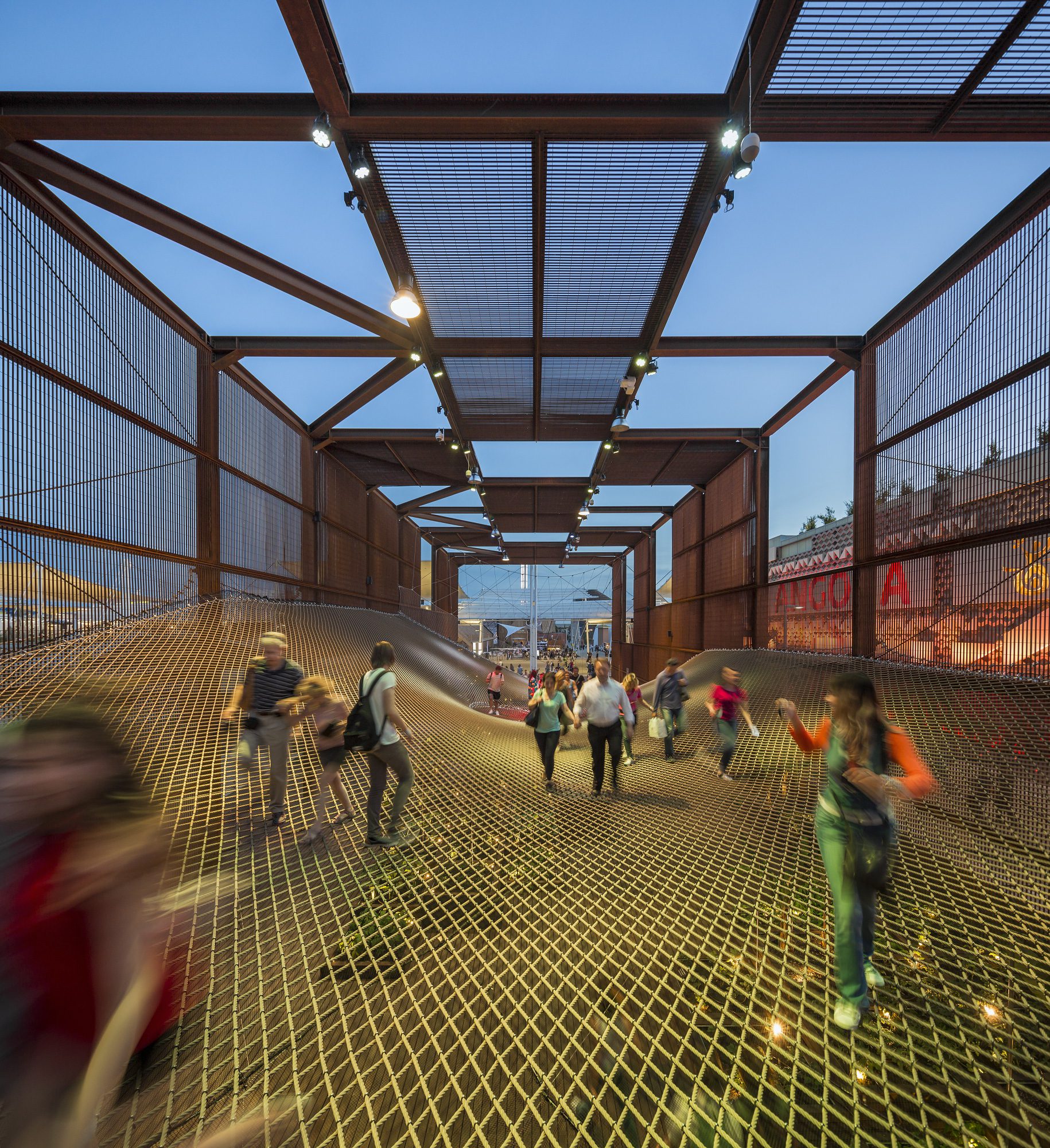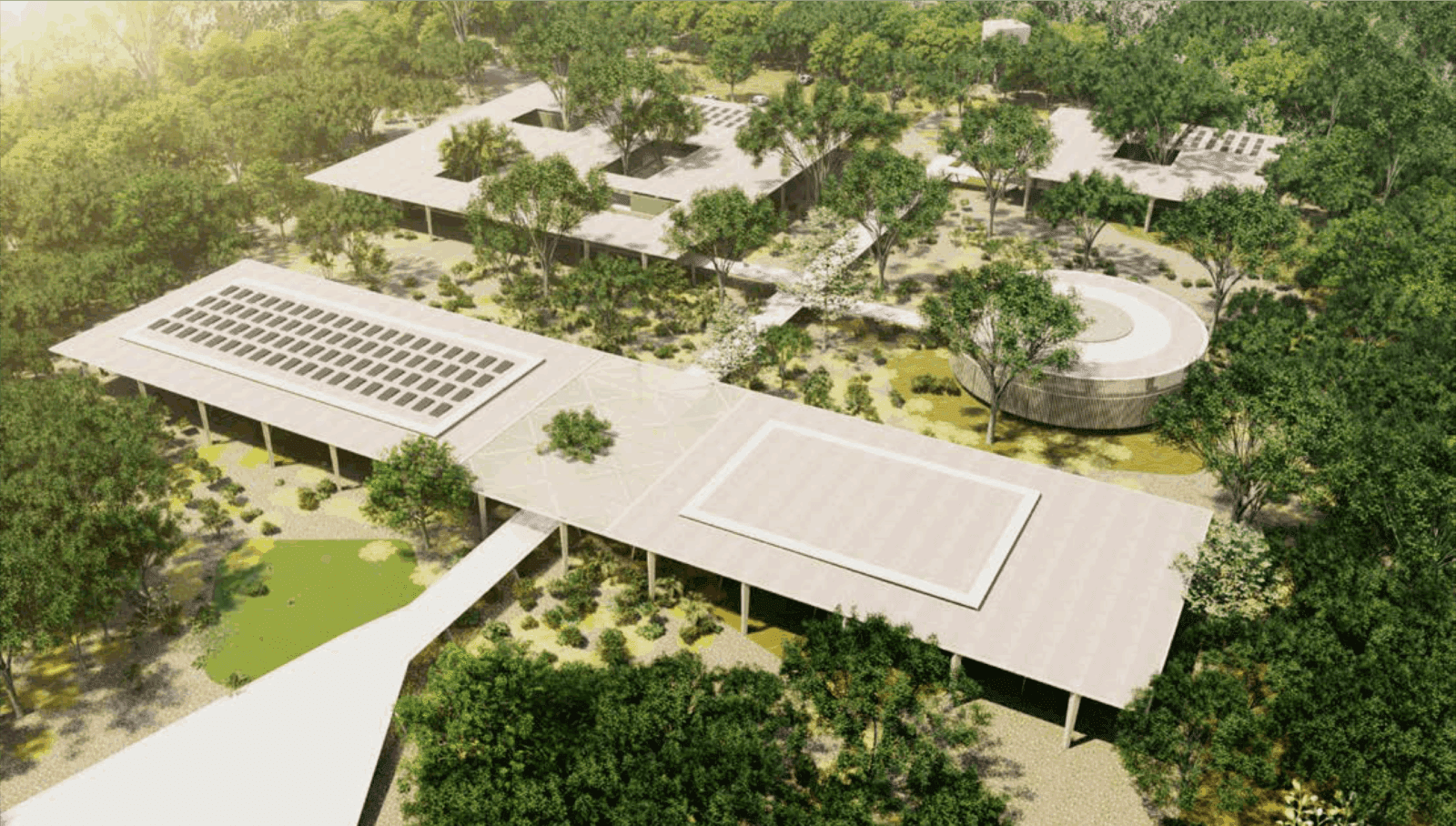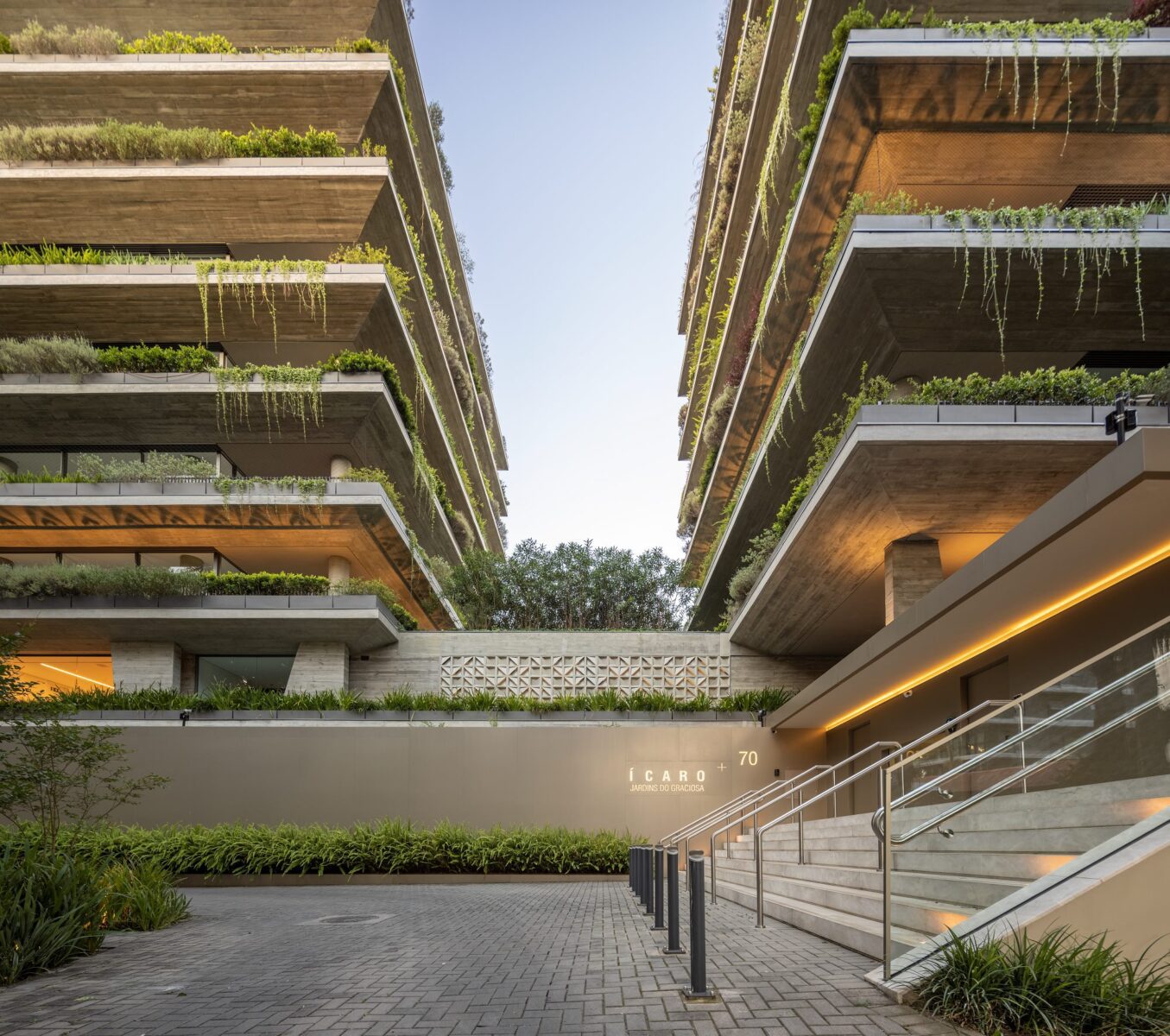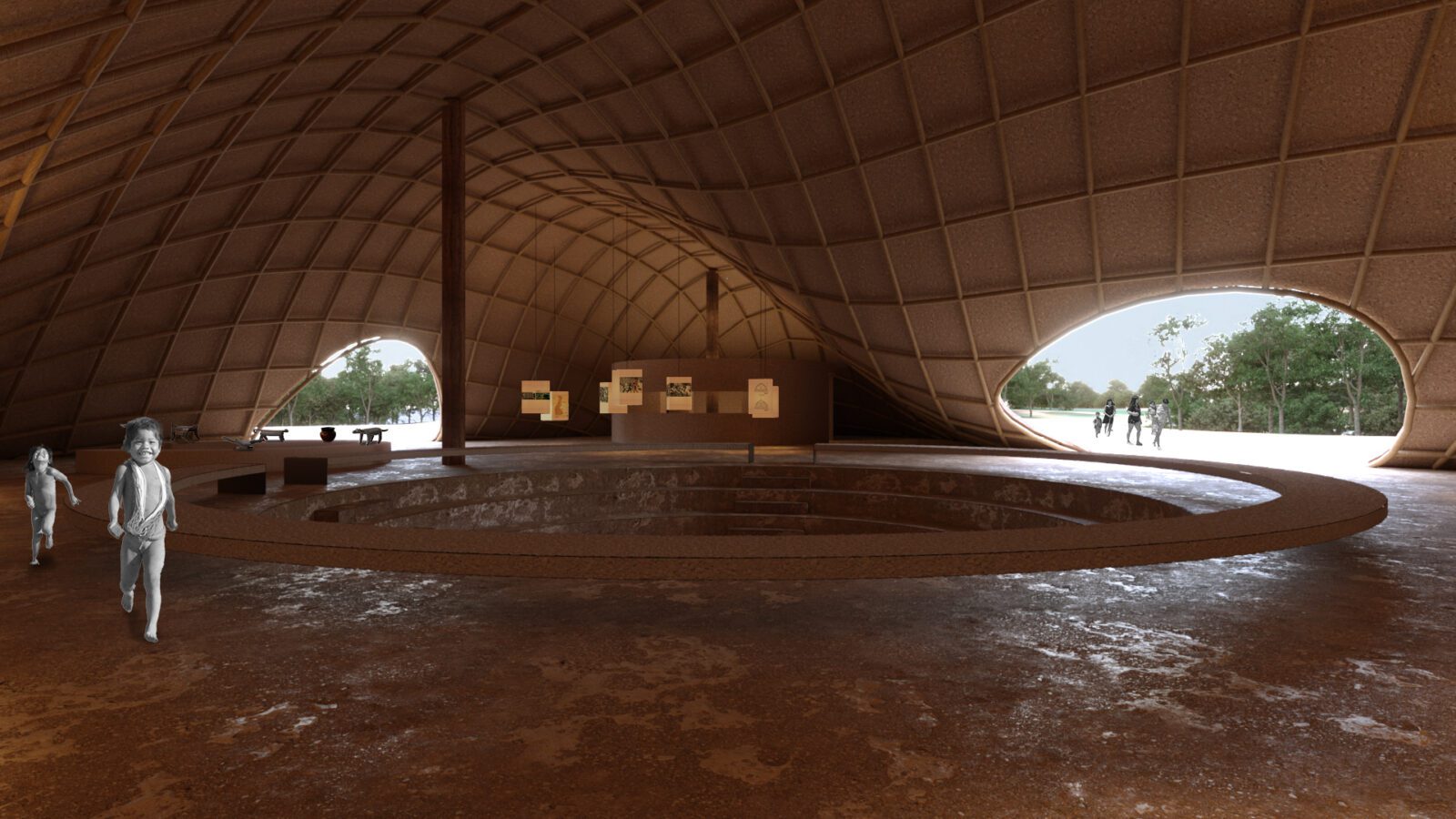Project implementation: Italy, Brazil
Project development: Brazil
As part of the 14th Architecture Biennial, whose central theme is “Extremes,” Studio Arthur Casas, in collaboration with the Arthur Casas Institute of Architecture and Innovation (IACAI), presents a timeline that systematizes architectural and urban projects designed to address the challenges posed by climate change at different scales.
The projects selected for the exhibition span a diverse range of geographic and climatic contexts, from interventions in dense urban environments, such as the Ícaro Building in Curitiba, to initiatives in the Legal Amazon, such as the Moitará Exchange Center, located in the Xingu Indigenous Park, and the MuCA in Belterra, Pará. These works exemplify an architectural approach that prioritizes integration with the bioclimatic and cultural specificities of each location, promoting solutions that combine technological innovation and environmental responsibility.
Based on research into their own practice, Studio Arthur Casas and IACAI selected the following projects:
-Brazilian Pavilion (Milan, Italy, 2014-2015; Naples, Italy, 2025-2027);
-MuCA – Administrative Village (Belterra, Pará, 2018-2028);
-Icarus Building (Curitiba, Paraná, 2014-2019)
-Moitará Exchange Center (Xingu Park, 2024-2026)
The timeline outlined in the exhibition highlights the consolidation of sustainable thinking in Studio Arthur Casas' practice over the past two decades. This journey culminated in the creation of IACAI, a non-profit institution dedicated to research into technologies and innovations geared toward sustainability and industrialization in the construction industry. The institute seeks to identify and address gaps in the development of construction practices, examining the potential impacts of such advances in addressing environmental issues affecting Brazil.
Through the Biennial, Studio Arthur Casas and IACAI reaffirm their commitment to architecture that transcends aesthetic functionality, positioning themselves as agents of socio-environmental transformation. The Biennial exhibition offers an opportunity to discuss and inspire new approaches that integrate innovation, sustainability, and climate responsibility, contributing to the advancement of theoretical and practical discourse in the field of architecture.





